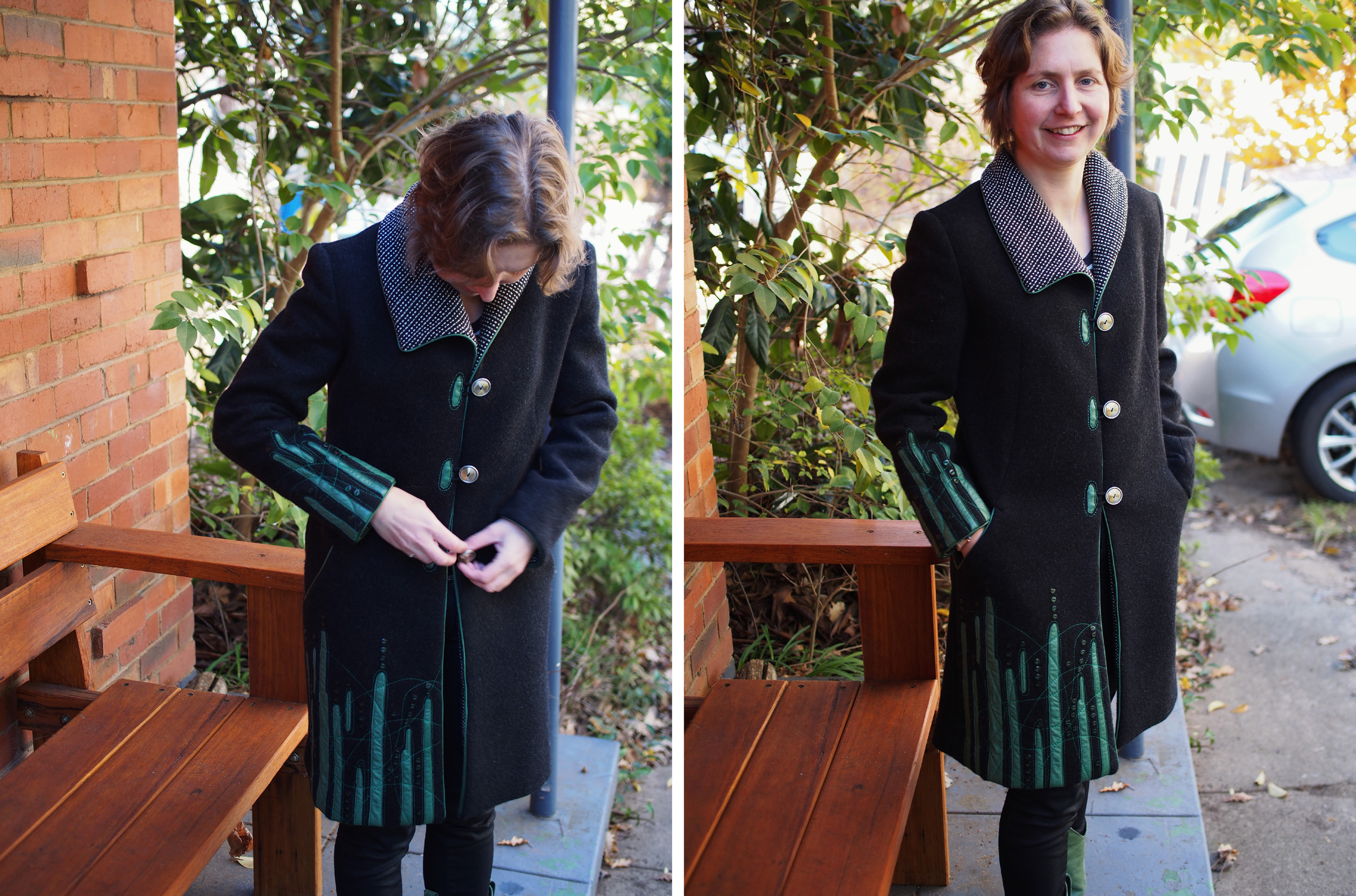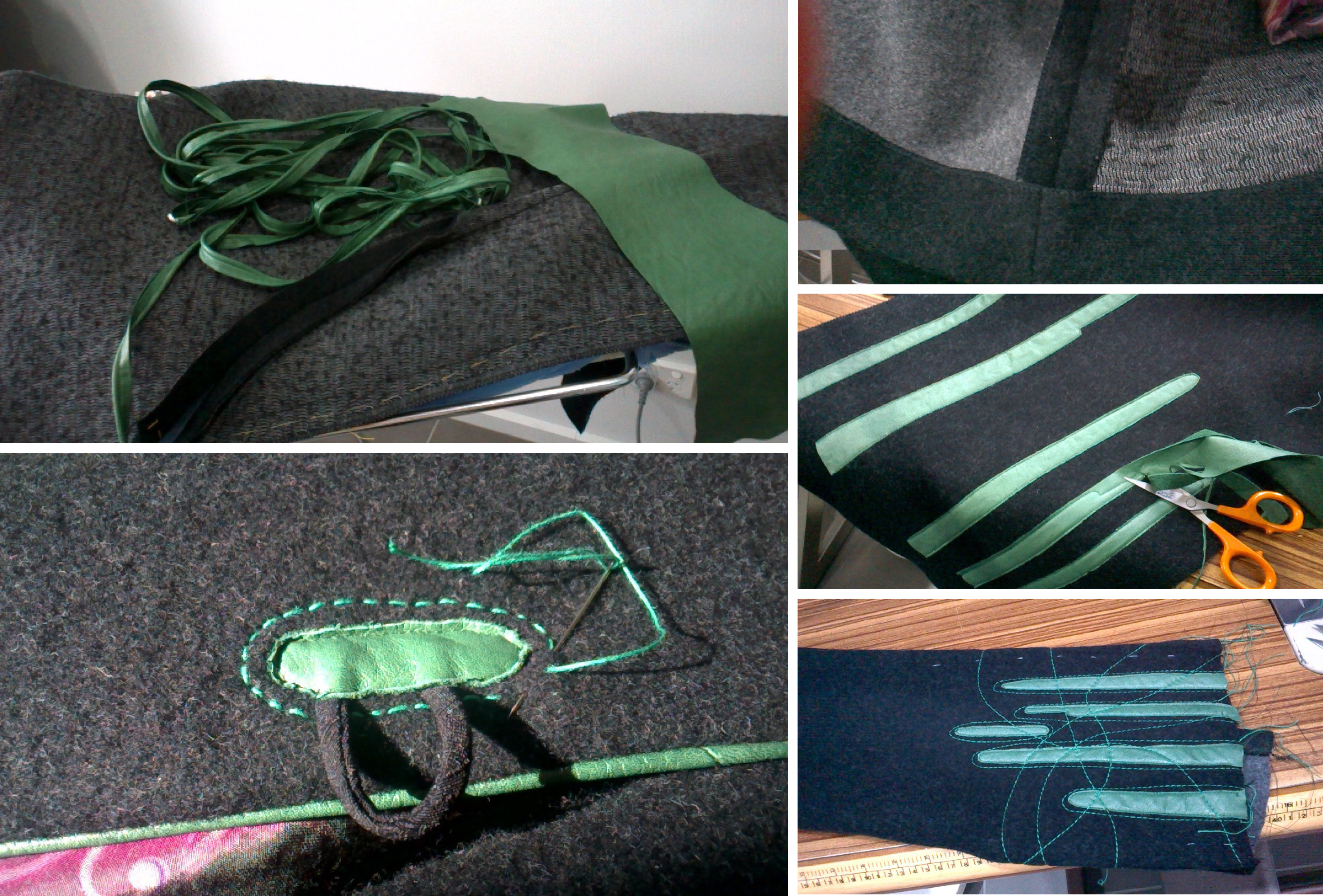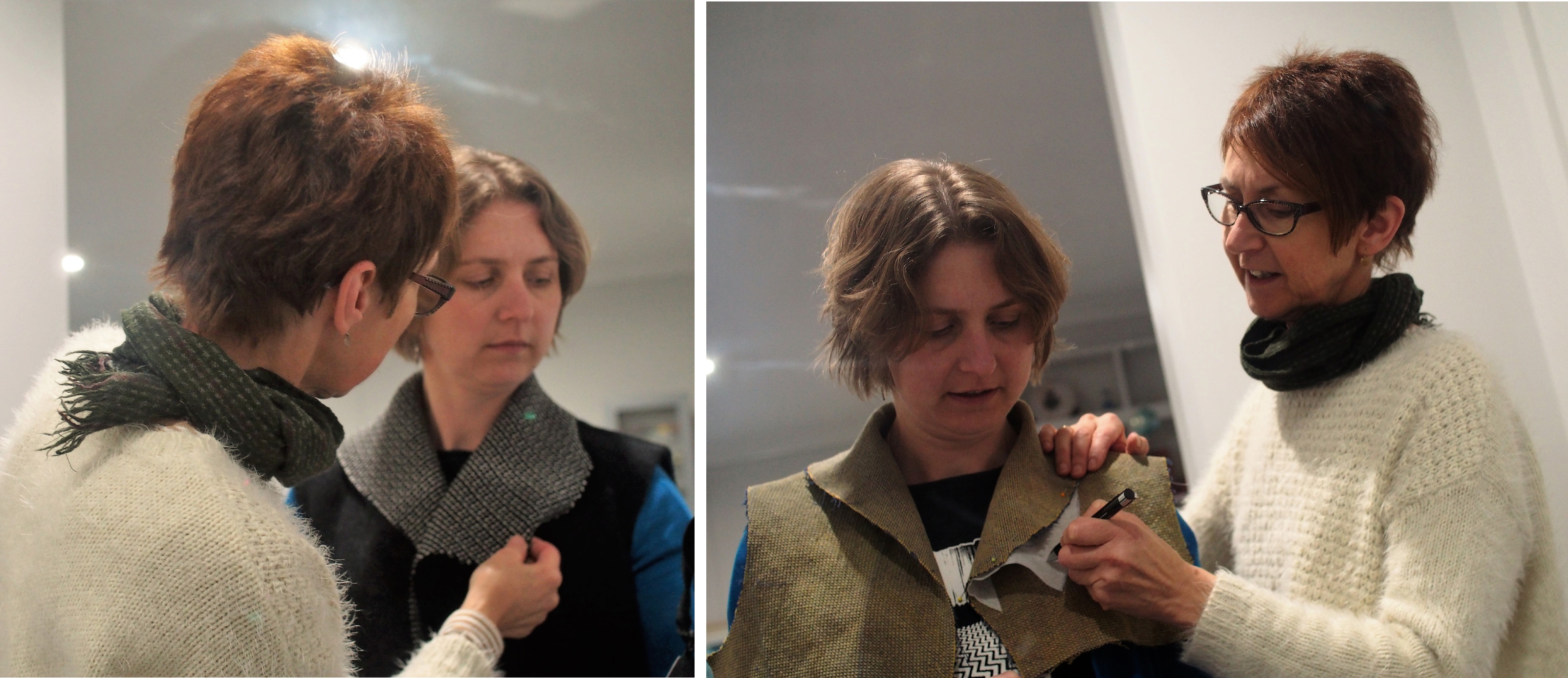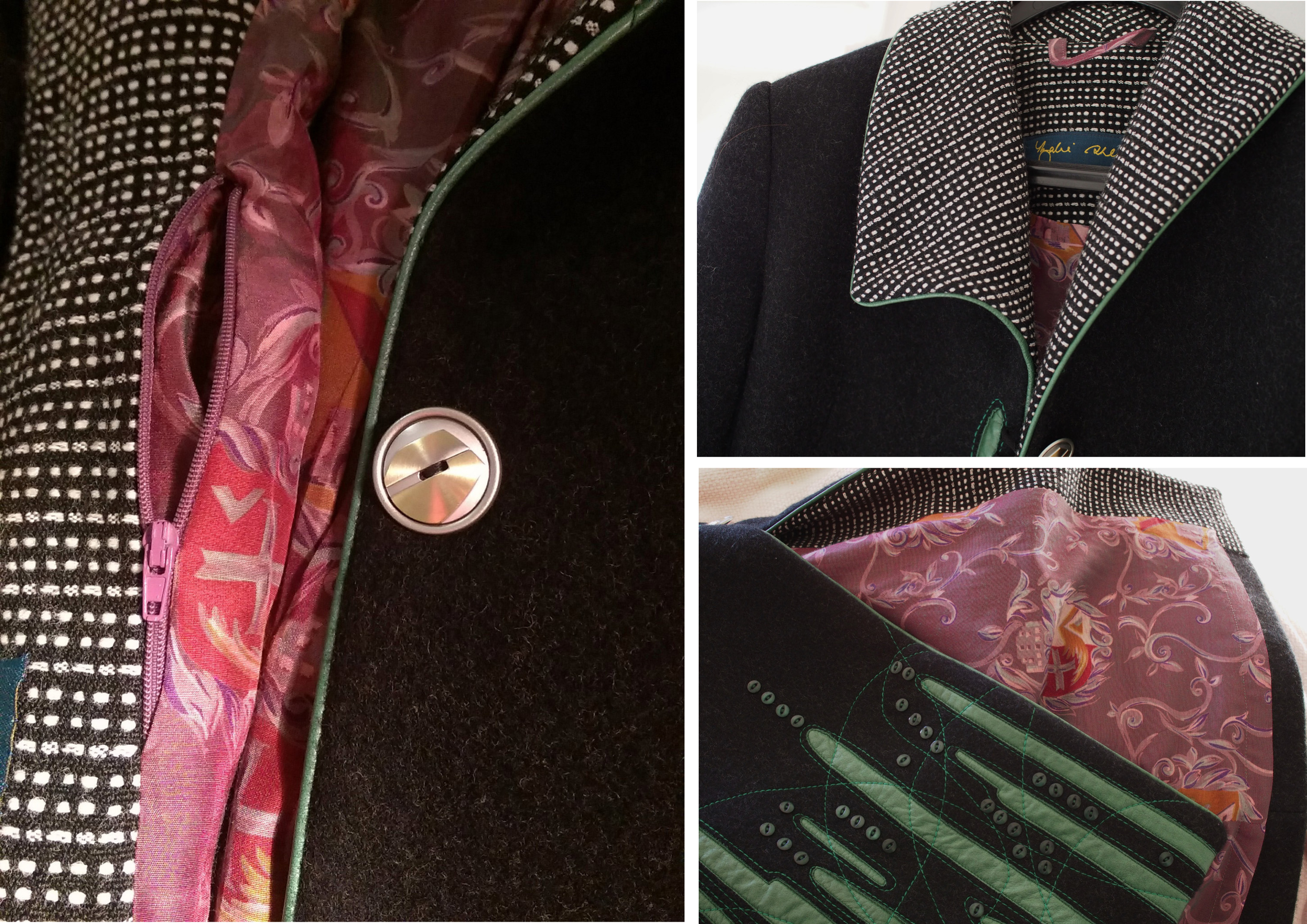Rozalie Sherwood loves the concept of not having too much, especially too much clothing. She lived and worked in China for two years and during that period experienced the particular freedom that comes with not having too many possessions to care for. In addition, she particularly loves the potential for creating individual garments that become a statement we present to the outside world, as a reflection of who we are.

Olivia wears the jacket made specially for her by her mum Rozalie Sherwood as part of The Slow Clothing Project
Jackets – the outer garments worn by both men and women – are her favourite canvas. Rozalie’s jackets are a comment on our accumulative and acquisitive society; we buy many cheap items and end up with a wardrobe of things we rarely wear. Whereas one beautiful, thoughtful, meaningful jacket can be worn forever. Rozalie made such a jacket for her eldest daughter Olivia – which now features in The Slow Clothing Project.
She loves the idea of educating people about the potential of making; the particular enjoyment the creative process gives; along with the potential for stress release. “Creating is such a pleasure that it can feel as if I am being selfish. It also energises me,” she said.
As a child, Rozalie had a passion for sewing and then extended this to working in the commercial sewing and fashion industry working as a sample maker, designer, pattern maker and cutter. She later taught fashion and textiles at TAFE in Brisbane and Canberra and also studied in the Textiles Workshop at the Australian National University School of Art.
Now based in Canberra, Rozalie’s current practice combines her love of textiles and fashion that is timeless. It is informed by three key perspectives.
“Sustainability: You can use leftover bits and pieces of fabric, including worn clothing, and found objects for a whole range of interesting projects. Resilience: When you experience creating or repairing something using your skills, you feel that you have achieved something. And it saves you money for more important things. Wellbeing: I’ve always said melodramatically that if I can’t get a couple of solid hours creating something every week, then I feel I have no life. It refreshes me and enables me to do other things that use my energy differently,” Rozalie said.
“As a child, I watched my mother sew and learned from her – including what not to do! Along with a beautiful yellow summer dress that was made for me to wear on a family holiday in Queensland, I recall big lumpy hems that bumped my knees because I was expected to grow to a great height. I stitched ‘clothes’ by hand for my sister’s Cindy/Barbie doll and seem to remember that most of her garments were for an exciting lifestyle that I was imagining for myself. Later, I learned to sew at school and continued to make most of my clothes as a young working woman.
“When my eldest child was six-months old, I enrolled part-time in Fashion at TAFE and during the four years learned how to sew ‘perfectly’ (which is nigh on impossible!). During the course, I realised that I wanted to teach at TAFE and this necessitated getting five years of industrial experience. By this time (1980), I had three very young children and was living in Brisbane. There were many small fashion businesses around and it was easy to get very part-time jobs that fitted in with my lifestyle caring for our children while my husband worked as an academic. Mostly I was a sample maker, working alongside the designer and making the first garment of any style before it went to the machinists to copy the techniques used. I learned so much from the women I worked alongside, particularly the ‘old hands’, as they called themselves, who shared their shortcuts and worked away at my impossible perfectionism.
“Eventually I taught at TAFE in Brisbane and then in Canberra and stayed with TAFE for many years. Teaching gave me innumerable opportunities to learn more as I helped students achieve their sewing goals.”
Through her sewing career, Rozalie has made a huge variety of garments, including lingerie, a man’s suit, wedding dresses, and many coats and jackets. The largest item she’s made was a shade-cloth awning for an odd-shaped courtyard (approx 9m long, 6m wide at one end and 3m at the other).
“I have made approximately 40% of my clothing and the rest comes from op/thrift shops. I rarely buy anything new because I don’t enjoy shopping.”
The lined wool overcoat that Rozalie made for The Slow Clothing Project, which she named Tokyo Oxygen, was photographed and documented by Olivia on her blog: www.olma.blogspot.com.
We share photos here that tell the story of its making.
Rozalie’s advice for beginners is to start with a simple project and read all the instructions first. “Google for shortcuts and find out how others handle things. Buy a good brand of sewing machine and a good overlocker – don’t overlook buying a second-hand machine to get a quality product, like an old Bernina. This will end up being more satisfying than buying one of the many cheap plastic machines out there.”
You can read more about Rozalie’s work at www.rozaliesherwood.com.


